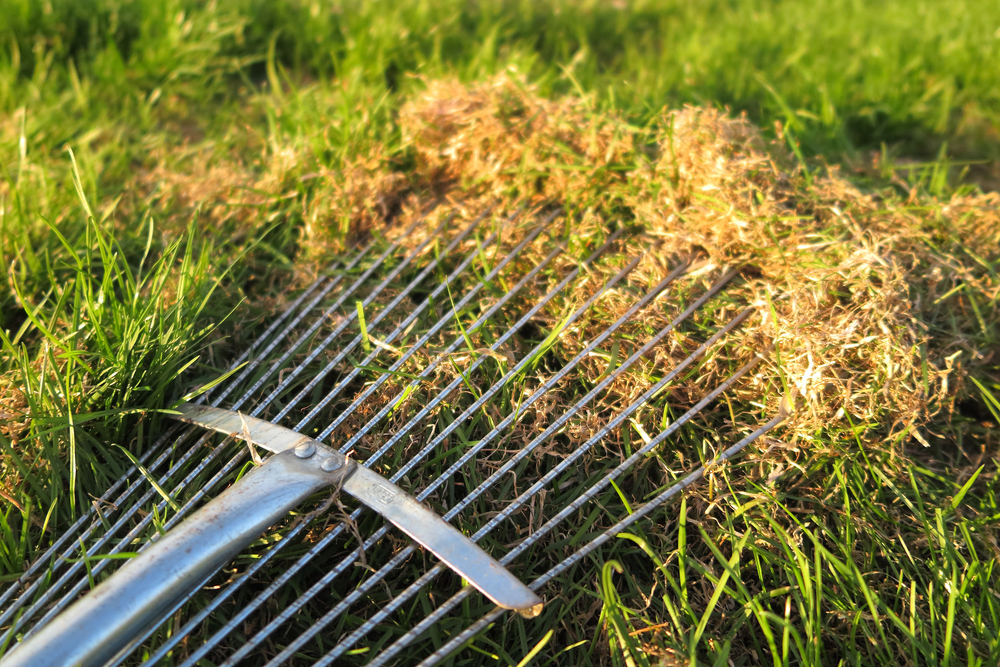
What is Thatch?
Thatch is a layer of organic matter that accumulates between the grass blades and the soil in a lawn. It’s composed of dead and living plant material, such as stems, roots and leaves, that has not fully decomposed.
A small amount of thatch (less than 0.5 inch) can be beneficial because it can help to insulate the soil, reduce water loss and protect the roots from temperature extremes. However, excessive thatch can create problems because it can reduce the movement of water, nutrients and air into the soil, leading to a shallow root system and poor overall health of the grass.
Additionally, excessive thatch can create a favorable environment for pests and diseases to thrive. Therefore, it is important to monitor the thatch level in a lawn and take appropriate steps to control it when necessary.
What Does Dethatching Do?
Dethatching a lawn will remove the layer of thatch that has accumulated. This can either be done manually with a thatch rake or mechanically with a dethatching machine.When using a thatch rake, you would need to vigorously rake the surface of the lawn to loosen and remove the thatch layer. This can be a labor-intensive process, especially if you have a large lawn.A mechanical dethatching machine, on the other hand, uses blades or tines to penetrate the soil and pull up the thatch layer. The machine can be rented from a local equipment rental store or hired from a professional lawn care service.

Before dethatching your lawn, it is important to make sure the grass is healthy and actively growing. Dethatching can stress the grass, so it is best to perform this task during the growing season when the grass can recover quickly. You should also water the lawn thoroughly the day before dethatching to help loosen the soil and make the process easier.
After dethatching, you can collect the thatch debris and dispose of it, or you can leave it on the lawn to break down and decompose naturally. It is important to follow up with proper lawn care practices, such as fertilization, watering and mowing, to maintain a healthy lawn and prevent excessive thatch buildup in the future.
The Benefits of Dethatching
Dethatching a lawn can provide several benefits, including:
- Improved access to water and nutrients: Excessive thatch can create a barrier that prevents water, air and nutrients from reaching the roots of the grass. Dethatching removes this barrier, allowing the grass to better absorb the water and nutrients it needs to grow and remain healthy.
- Pest and disease control: Thick thatch can provide an opportune environment for pests and diseases to thrive. Dethatching can reduce this habitat and help to control pest and disease problems.
- Better air circulation: Thatch can prevent air from reaching the soil.. Dethatching helps to improve air circulation and promote a healthier soil environment.
- Increased tolerance to stress: Dethatching can help to improve the overall health of the grass, making it stronger and better able to tolerate stress from environmental factors such as drought, heat and cold.
It’s important to note that dethatching should only be done when necessary and not too frequently as it can stress the grass and lead to additional problems if overdone. A general rule of thumb is to dethatch a lawn once every few years, or when the thatch layer is more than 0.5 inch thick.
If you have any questions about how to access dethatching materials or how the process works, you can contact us or drop by one of our seven locations.
